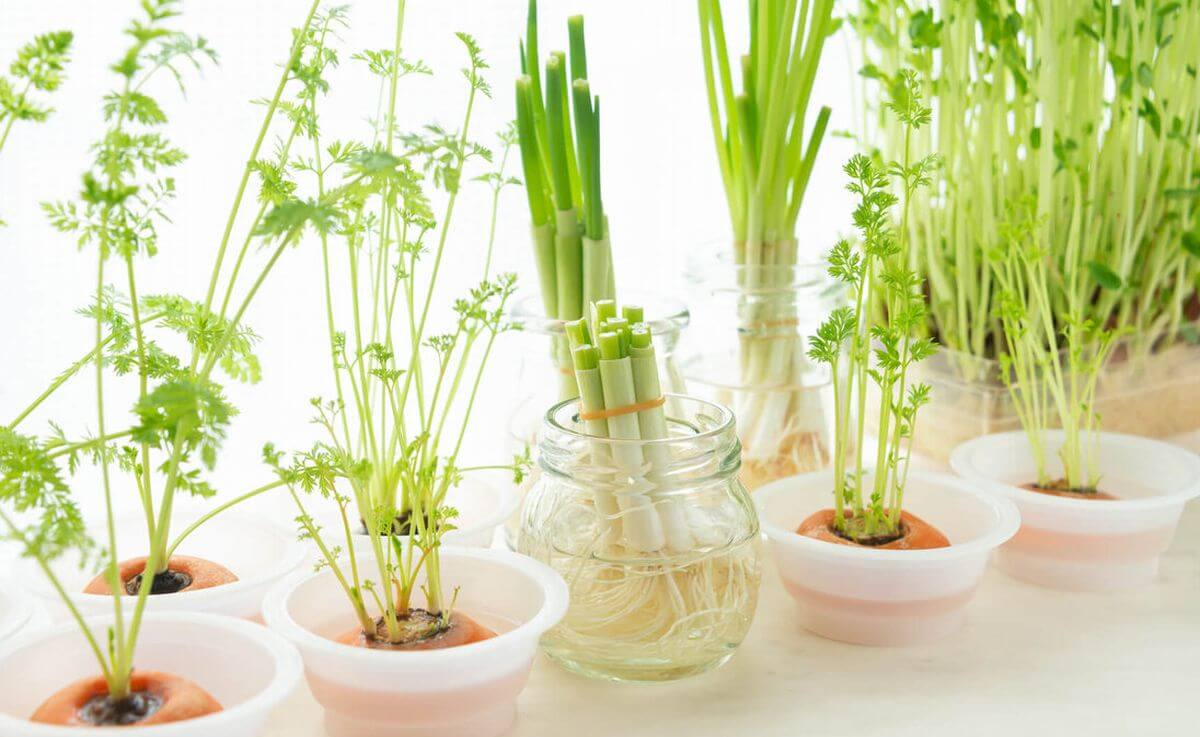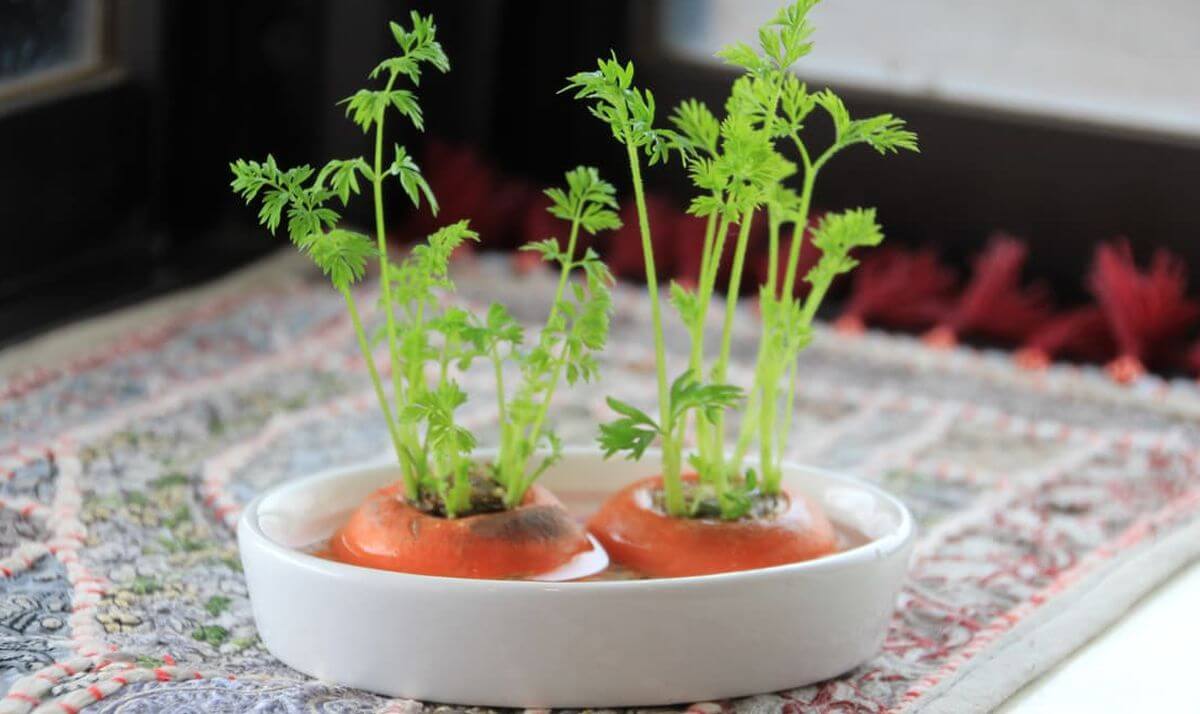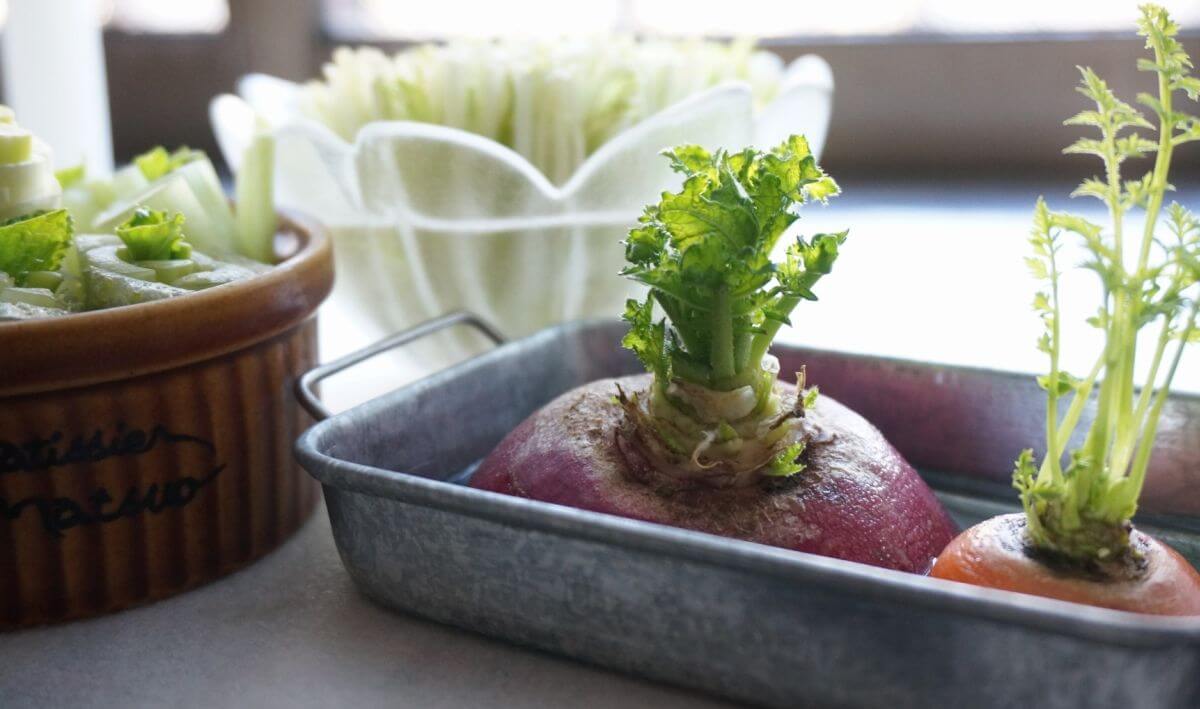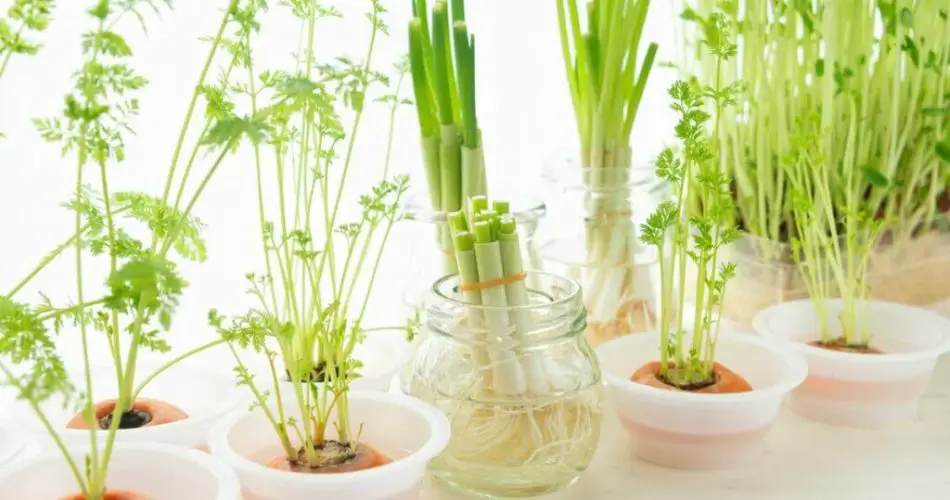Discover the magic of turning kitchen waste into a bountiful vegetable garden with Jean Baptiste. In this guide, we’ll explore an effortless method to regrow fruits, herbs, and vegetables from scraps you’d typically discard. Not only is this an eco-friendly practice, but it also saves money, enhances sustainability, and provides a fun gardening project for all ages.

1. Unlocking the Potential:
Transform your perception of kitchen leftovers! Regardless of your gardening skills, a straightforward method exists to turn scraps into a thriving garden. Grab those usually compost-bound scraps, a few jars, and unused pots – and you’re set for a rewarding, sustainable adventure.
Pro Tip: No need for daily watering – it’s that easy!
2. The Bounty of Reproduction:
Fresh vegetables can be pricey, but this method not only makes them more affordable but also amplifies your vegetable variety. It’s a pocket-friendly, sustainable solution to minimize food waste and elevate your vegetable consumption.
Fun Fact: Engage kids in gardening and witness their enthusiasm flourish while reducing food waste.
3. What Can You Regrow?
The power of nature is astounding – witness the regeneration of a multitude of vegetables, fruits, and herbs from kitchen waste. Here’s a list of 20 treasures you can regrow effortlessly:
- Potatoes
- Sweet potatoes
- Avocado (Lawyer)
- Ginger
- Root crops (carrots, turnips, beets, radishes, parsnips)
- Celery
- Fennel
- Garlic, leeks, shallots, and onions
- Leafy green vegetables (lettuce, romaine)
- Herbs (basil, mint, cilantro)
- Lemongrass
- Shallot
- Pineapple
- Peaches, nectarines, and plums (from pits)
- Pumpkins
- Winter squash
- Cabbage and Bok choi
- Mushrooms
- Tomatoes
- Fruit trees (lemon, lime, peach, cherry, apple)
4. Growing from Store-Bought Produce:
Yes, indeed! Utilize organic vegetables, preferably sourced locally. Some store-bought varieties may be chemically treated, hindering regrowth. Be cautious, as the success may depend on the vegetable’s origin and the grower.
Pro Tip: Choose organic, local produce for optimal results and suitability to your region.
5. Three Essential Rules for Success:
Follow these crucial guidelines to ensure a thriving garden from your kitchen scraps:
- Change the water daily to prevent slime and unpleasant odors.
- Place vegetable scraps on a sunlit windowsill for indirect sunlight.
- When planting outdoors, maintain regular root watering without saturating the soil.
6. In-Depth Regrowing Guide for Select Vegetables:
Potatoes:
Begin with organic, untreated potatoes. Follow a step-by-step process, including sprouting shoots and planting in rich soil. Optimal for both containers and garden plots.
Lettuce, Romaine, and Leafy Greens:
Easily regrow from the base of the lettuce. Place it in water, changing every two days, and witness new green shoots emerging – a continual source for salads and soups.
Sweet Potatoes:
Choose between the water method or soil method. Both involve simple steps, offering the joy of regrowing this delightful vegetable.

Root Vegetables – Carrots, Radishes, Beets, Turnips, Parsnips:
Replant the remains outdoors for growing new roots or enjoy fresh greens by keeping them indoors. A healthy addition to salads and soups!
Garlic:
Sprouted garlic bulbs are treasures for regrowth. Plant them outdoors in the fall for a mid-summer harvest, or enjoy flavorful shoots by planting in a pot.
Herbs – Basil, Mint, Rosemary, Thyme, Oregano, Sage, Marjoram, Lavender:
A simple method for starting your herb garden. Cut a piece, place it in water, and transfer to a sunny spot. Once roots form, transplant outdoors or maintain as a houseplant.
Bulb Vegetables – Celery, Bok Choy, Cabbage, Lemongrass, Fennel:
Replant celery bases for quick regrowth. Use the same method for bok choy, cabbage, and fennel. A delightful and sustainable addition to your kitchen.

Onions, Green Onions, Shallots, and Leeks:
Replant discarded bases in shallow water until roots form, then transplant outdoors. Harvest the green shoots as they appear, providing a continuous source.
Ginger:
Transform ginger roots into a tropical plant with patience and care. Follow the outlined steps for an abundant supply and a beautiful houseplant.
Pineapple:
Upcycle pineapple tops into new plants by cutting, drying, and planting. While it takes time, the reward of a homegrown pineapple plant is worth the wait.
Fruits:
Explore the possibilities of growing fruit trees from seeds of lemons, oranges, apples, cherries, peaches, plums, and avocados. A patience-requiring endeavor, but a remarkable addition to your garden landscape.
Mushrooms:
Growing button mushrooms from caps and stems is challenging. Consider purchasing a grow kit or sterile mycelium for an enjoyable and rewarding experience.
Tomatoes, Peppers, Cucumbers, and Squash:
Experiment with seeds from these vegetables. Slice, dry, and plant them in fertile soil for a fun gardening experiment. While not always producing true-to-life fruit, it’s an exciting venture.
7. Conclusion:
Embark on your regrowing journey, turning kitchen scraps into a flourishing garden. Experiment, enjoy, and share your successes in this eco-conscious and rewarding practice. What’s your favorite vegetable to regrow from kitchen scraps? Share your experiences and join the conversation!



